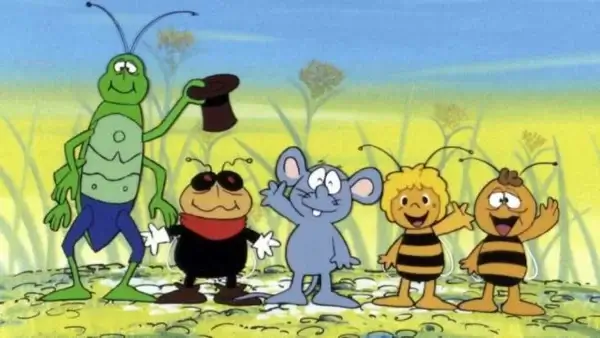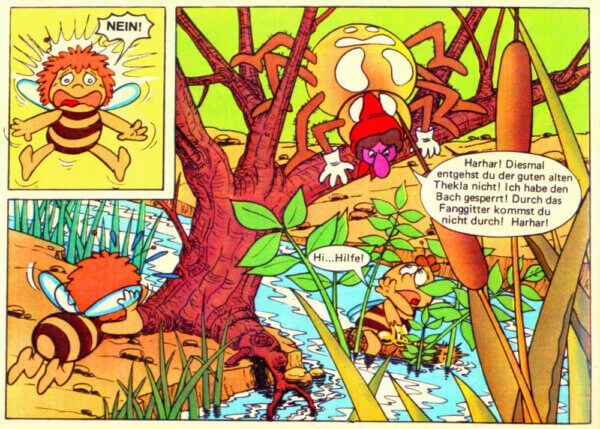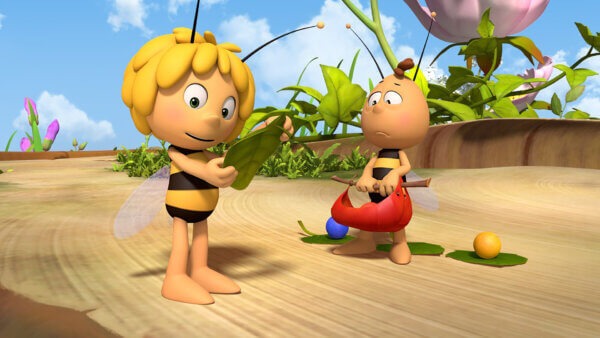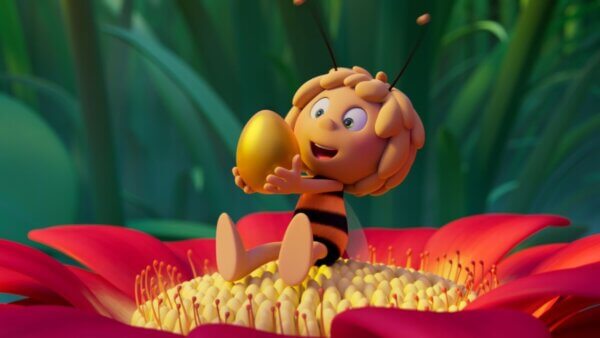Maya the Bee’s 50 Years of Animated Adventures
Before making its animated debut, The Adventures of Maya the Bee was a picture book written by German author Waldemar Bonsels in 1912. It told the story of a little bee who left her hive in search of adventure in the outside world. Adele Szold-Seltzer translated it into English ten years after its first publication in America, where it would soon grow and reach new readers internationally.
While Bonsels went on to write several other books before his death in 1952, Maya the Bee would become his most well-known creation, and due to its popularity, it eventually received its first animated adaptation in 1975. What followed was not just a popular anime series for young children but equally successful adaptations in animated form that have spanned fifty years this year.
To mark the curious character’s fiftieth anniversary, I wanted to explore the history, studios, and people behind these animated projects, some of which became well-known within their demographic. Furthermore, I wanted to look at just what made each of these shows so unique and whimsical that they kept the character relevant outside the pages of the book she came from.
Maya’s First Flight into Animation
It wouldn’t be until 1975 that Maya would be adapted as an animated character. Loosely based on the book, the show was tailored for young children and saw Maya go on adventures in and around her hive in each episode, with a cast of small group of friends who often tagged along as they explored the world and learn new things together.
The series was originally produced and animated at Zuiyo Enterprise, a Japanese animation studio who were best known for its World Masterpiece Theater series, which adapted a different piece of classic literature in each episode, including Anne of Green Gables and A Dog of Flanders. With their background in successful adaptations, they were the perfect studio to turn Bonsels’ book into an animated series, with Apollo Film co-producing the series.
Despite Zuiyo Enterprise eventually being split into two different companies – a distribution company and an animation studio known as Nippon Animation – both the latter and Zuiyo Enterprise would enjoy the success of Maya the Honey Bee. This is especially true for Nippon Animation during the studio’s early years, helping to establish it as a major contender in the anime space that continues to produce anime shows and films to this day.
Maya was so popular among its audience that a second series was produced, titled The New Adventures of Maya the Honey Bee. Featuring a cast of new characters, the anime enjoyed its fair share of success when released and dubbed for other countries outside of Japan, even being aired on major channels such as Nick Jr in the nineties despite no new episodes having been made for over a decade.
Why Maya Became Andre Roche’s Iconic Comic Book
For a decade from 1976, Maya had a comic book series drawn by the famed French artist Andre Roche, who was no stranger to drawing licensed and already beloved characters for children to enjoy. Known for his work with multiple forms of merchandising with iconic fictional figures like the Disney characters Mickey Mouse and Donald Duck, Vicky the Viking, and Tom & Jerry, his artwork stood out as he was able to capture these recognisable faces and give them expressive and comedic charm while adding plenty of colours to make each panel a visual delight for readers of all ages.
While the anime was slowly being translated and dubbed for several European and Western countries across the late seventies and beyond, Roche’s interpretation of the character proved to be a hit with newfound fans as well as existing ones of the little buzzing adventurer. Inspired by the designs and characters from both the source material and the animated series, he was able to add his spin with some characters having additional colours and being able to emote more with their more expressive redesigns.
Despite other attempts to reignite interest in the character in the years to follow from companies with games for Nintendo handheld consoles and toy lines, this artist’s work and contribution towards the character and her further adventures outside of the animated series kept kids entertained until the end of the eighties. Maya didn’t return to television screens until the new millennium, however, Andre Roche’s work through the comics and other Maya merchandising helped to cement her and much as his penmanship as an artist in popular culture in Europe.
Maya’s Return to Animation
While the character lived on television through re-releases around the world from the original anime, Roche’s colourful comic books, and merchandising like video games and toys, it wouldn’t be until 2012 that Maya would return to a whole new generation of audiences. This brand new series, simply titled Maya the Bee, was produced by Studio 100, took some influence from Roches’ comics and Zuiyo’s anime to create a fresh spin on Maya as she and her best friend, Willy, try to have fun adventures while also trying to help out others.
Despite only consisting of two seasons across its five-year run, the series drew in a lot of talented individuals to help make it a buzz among the crowded and evolving landscape and children’s television. Among them were Jérôme Mouscadet and Sophie Decroisette, a director and writer who worked a lot on the second season and who are no strangers to creating hit shows, as both of them previously directed and wrote for other popular animated shows like Code Lyoko and Heidi.
This new interpretation of the character proved to be a hit with audiences new generation of audiences, so much so that Studio 100 collaborated with other animation studios from around the world under its ownership to produce Maya’s first feature film, Maya the Bee: The Movie, released in 2014. Due to the film’s box office success, it was followed up by Maya the Bee: The Honey Games in 2018 and Maya the Bee: The Golden Orb in 2021.
Despite only a handful of animated adaptations, Maya the Bee has certainly had one of the most interesting journeys across her five-decade run in the animation industry. With the talents of countless artists, directors, writers, and studios across multiple continents, the picture book has been enjoyed by countless and varied generations on a global scale.
Studio 100’s Maya the Bee series and film trilogy can be seen on Amazon Prime Video, and the original anime series can be found on Filmbox Live.






